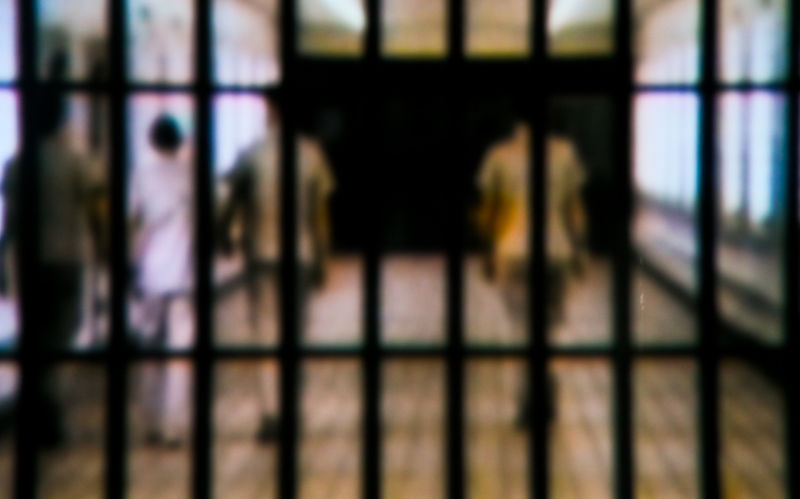Dying in prison
October 13, 2025
The political predilection for punishment is contributing to yet another stressor on prisons. As Australia’s prison population ages, so, too, do inmates risk dying inside.
Consider the case of prisoners enduring a life-threatening illness. They generally do not have access to Medicare or the Pharmaceutical Benefits Scheme. Health services in prisons are funded and provided by the state and territory governments, not the federal government.
Medicare exclusion has been in place since 1973 to avoid duplicating services, but has resulted in significant health inequities for incarcerated individuals. Note: the Australian Institute of Health and Welfare indicates that prisoners aged over 45 years are increasingly likely to have significant and chronic health considerations. In overcrowded prisons, commonly identified problems such as delayed treatment, insufficient medical staff and meagre facilities are aggravated.
Inadequate healthcare in prisons means the state will eventually have to pay. Unaddressed health issues incur extensive and costly care in the community.
The fate of seriously ill prisoners becomes even more dire when their prognosis is deemed an emergency. Taking immediate action in prisons is complicated. Bringing an ambulance inside is a major event. Programs, visits, meals and recreation are put on hold. Prisoners are confined to cells. The ambulance passes through security checks on entry and exit.
The necessary delays for responding to an emergency create tension for other inmates and more stress for prison officers and medical staff. The time lag for providing urgent treatment can affect the health outcomes of prisoner patients.
Consider, too, the case of prisoners entering their final days: a phenomenon that will increase with the punitive preference for longer sentences. Note: the AIHW reports that people in prison are often considered to be elderly between the ages of 50-55 (compared with 65+ in the general community).
Prisons are not designed for geriatric populations that have a high prevalence of serious illness. In these environments, conditions for providing end-of-life care are limited. Options for visits and saying goodbyes are restricted.
Take the case of John (not his real name). He was transferred from an overcrowded city-based prison to a regional prison. The shift meant that he was moved 300 kilometres from family. At the time of his transfer, it was known that he had a terminal diagnosis for cancer.
John was transferred to the local hospital two days before he died.
There are questions to be asked about John’s situation, remembering that people are sent to prison as punishment, not for punishment. The loss of liberty is the punishment. So, what level of palliative care and psychosocial support was given to him? How does the inside end-of-life response compare to what is received by the outside community?
John was also a Noongar maaman (man). At a young age, he entered the child welfare system and survived institutional abuse. He, along with most of his brothers and brother-cousins, ended up stuck in the revolving prison gate.
John, however, never lost sight of family: a value that Noongar people prioritise. And nor did family lose sight of John.
When there is a death, Noongar family members are obliged to farewell their loved ones. From the family’s perspective, the geographically distant prison made it difficult for them to provide John with the help he would have needed to pass peacefully from this life. Some Aunties and Uncles were not able to make the trip.
For family who did make it, the cost was prohibitive. One member estimated it cost them $6000 in fuel alone. Note: it is not uncommon for Aunties and Uncles, many of whom are disadvantaged, to attend one or two funerals each week to often mourn untimely deaths.
There are additional moral questions to be asked. John’s terminal diagnosis meant that he could not serve out his sentence. He was certainly in no state to reoffend. He was no risk to society. So, given he could not anticipate any future, why did he have to endure what could be considered cruel and unusual punishment: a form of death sentence? Why could he not have been granted compassionate release and allowed to spend his final days with family?
Increasing rates of prisoners dying in a deteriorating prison system add to the urgency of addressing mass incarceration in Australia. They incur considerable expense for the state, an extra burden for prison administration, increased suffering for prisoners and their families, and a loss of reputation as a humane country.
What is also being heightened is the responsibility of politicians and policy makers to ensure that a prisoner’s mortality is not differentiated from that of other citizens.
There is a backlog of reforms, and addressing them is as urgent as the last gasp of breath.
The views expressed in this article may or may not reflect those of Pearls and Irritations.

